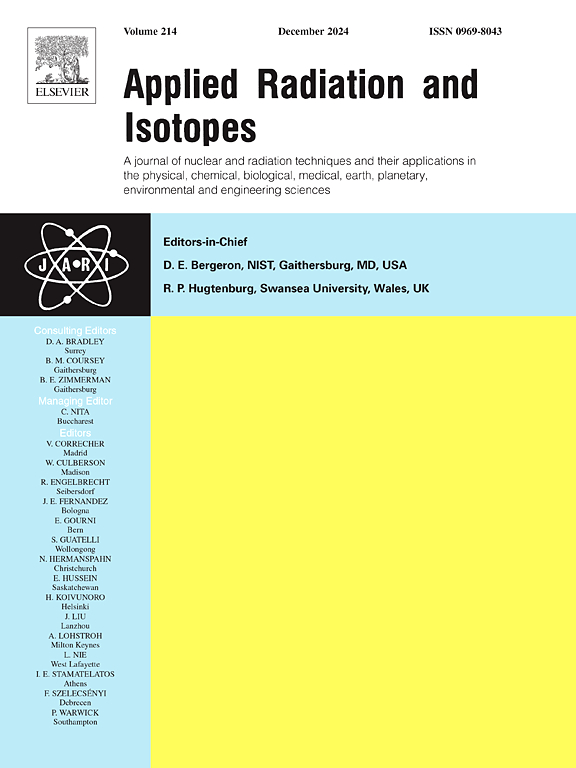基于多机器人和 Voronoi 分区的放射源搜索方法
IF 1.6
3区 工程技术
Q3 CHEMISTRY, INORGANIC & NUCLEAR
引用次数: 0
摘要
本文提出通过粒子过滤和 Voronoi 分区,在一定时间内定位多个未知放射源。首先,以每个机器人为 Voronoi 中心点,对整个区域进行划分。然后,机器人通过粒子过滤同时进行源搜索。当所有机器人完成一个粒子滤波过程后,迭代结束,下一个迭代开始,直至放射源搜索结束。最后,实验证明了所提方法的效率和准确性。本文章由计算机程序翻译,如有差异,请以英文原文为准。
Radioactive sources search method based on multi-robot and Voronoi partition
In this paper, it is proposed to locate multiple unknown radioactive sources within a certain time limit through particle filtering and Voronoi partitioning. Firstly, with each robot as a Voronoi centroid, the entire area is partitioned. Then, the robots conduct source search concurrently through particle filtering. When all the robots complete the process of one-particle filtering, the iteration ends and the next one begins until the search for the radioactive source is terminated. Finally, experiment is conducted to demonstrate the efficiency and accuracy of the proposed method.
求助全文
通过发布文献求助,成功后即可免费获取论文全文。
去求助
来源期刊

Applied Radiation and Isotopes
工程技术-核科学技术
CiteScore
3.00
自引率
12.50%
发文量
406
审稿时长
13.5 months
期刊介绍:
Applied Radiation and Isotopes provides a high quality medium for the publication of substantial, original and scientific and technological papers on the development and peaceful application of nuclear, radiation and radionuclide techniques in chemistry, physics, biochemistry, biology, medicine, security, engineering and in the earth, planetary and environmental sciences, all including dosimetry. Nuclear techniques are defined in the broadest sense and both experimental and theoretical papers are welcome. They include the development and use of α- and β-particles, X-rays and γ-rays, neutrons and other nuclear particles and radiations from all sources, including radionuclides, synchrotron sources, cyclotrons and reactors and from the natural environment.
The journal aims to publish papers with significance to an international audience, containing substantial novelty and scientific impact. The Editors reserve the rights to reject, with or without external review, papers that do not meet these criteria.
Papers dealing with radiation processing, i.e., where radiation is used to bring about a biological, chemical or physical change in a material, should be directed to our sister journal Radiation Physics and Chemistry.
 求助内容:
求助内容: 应助结果提醒方式:
应助结果提醒方式:


